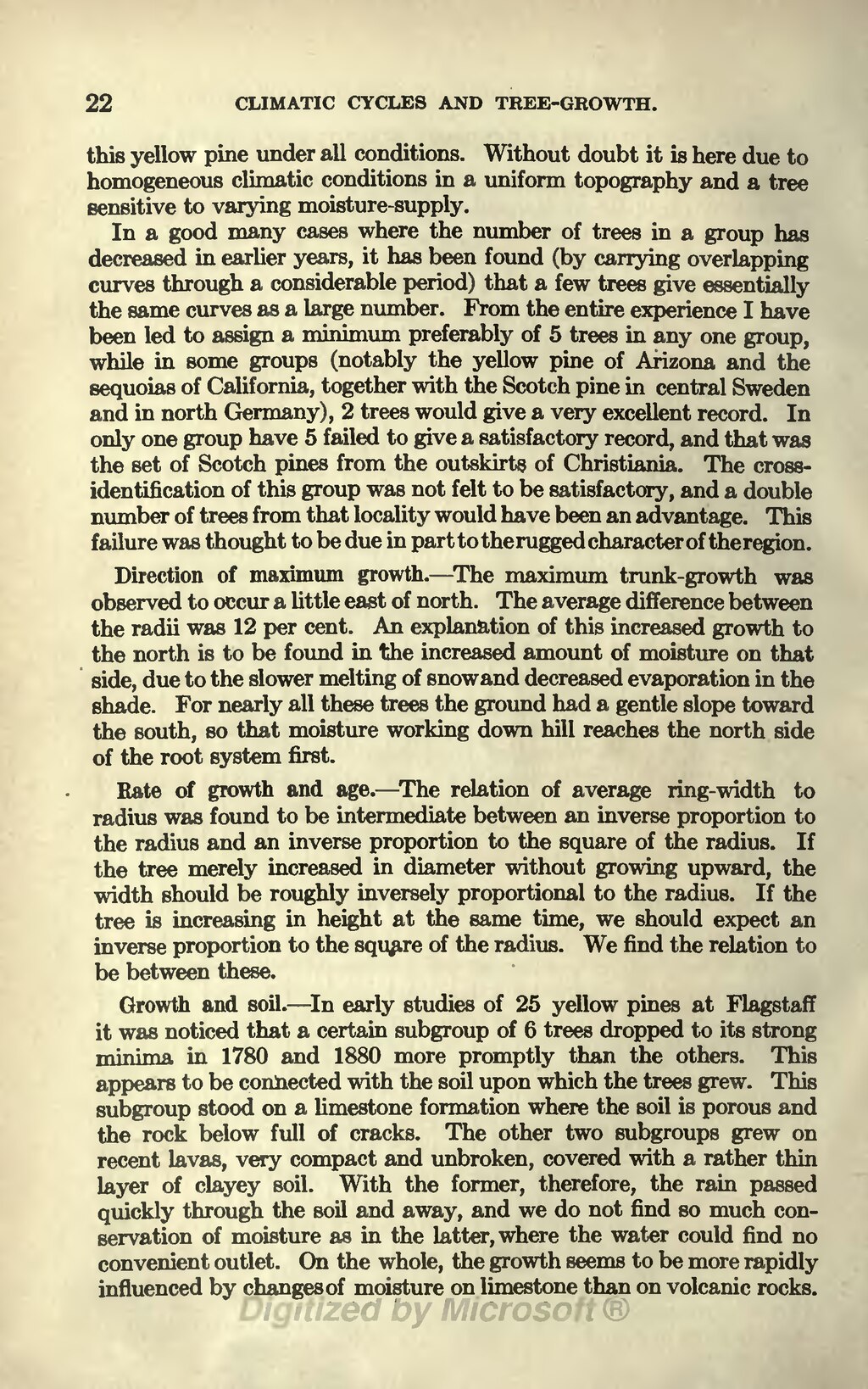this yellow pine under all conditions. Without doubt it is here due to homogeneous climatic conditions in a uniform topography and a tree sensitive to varying moisture-supply.
In a good many cases where the number of trees in a group has decreased in earlier years, it has been found (by carrying overlapping curves through a considerable period) that a few trees give essentially the same curves as a large number. From the entire experience I have been led to assign a minimum preferably of 5 trees in any one group, while in some groups (notably the yellow pine of Arizona and the sequoias of California, together with the Scotch pine in central Sweden and in north Germany), 2 trees would give a very excellent record. In only one group have 5 failed to give a satisfactory record, and that was the set of Scotch pines from the outskirts of Christiania. The cross-identification of this group was not felt to be satisfactory, and a double number of trees from that locality would have been an advantage. This failure was thought to be due in part to the rugged character of the region.
Direction of maximum growth.—The maximum trunk-growth was observed to occur a little east of north. The average difference between the radii was 12 per cent. An explanation of this increased growth to the north is to be found in the increased amount of moisture on that side, due to the slower melting of snow and decreased evaporation in the shade. For nearly all these trees the ground had a gentle slope toward the south, so that moisture working down hill reaches the north side of the root system first.
Rate of growth and age.—The relation of average ring-width to radius was found to be intermediate between an inverse proportion to the radius and an inverse proportion to the square of the radius. If the tree merely increased in diameter without growing upward, the width should be roughly inversely proportional to the radius. If the tree is increasing in height at the same time, we should expect an inverse proportion to the square of the radius. We find the relation to be between these.
Growth and soil.—In early studies of 25 yellow pines at Flagstaff it was noticed that a certain subgroup of 6 trees dropped to its strong minima in 1780 and 1880 more promptly than the others. This appears to be connected with the soil upon which the trees grew. This subgroup stood on a limestone formation where the soil is porous and the rock below full of cracks. The other two subgroups grew on recent lavas, very compact and unbroken, covered with a rather thin layer of clayey soil. With the former, therefore, the rain passed quickly through the soil and away, and we do not find so much conservation of moisture as in the latter, where the water could find no convenient outlet. On the whole, the growth seems to be more rapidly influenced by changes of moisture on limestone than on volcanic rocks.
